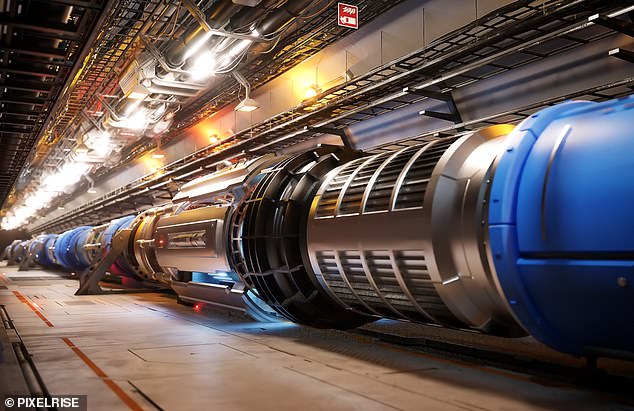
World’s Largest 56.5-Mile Hadron Collider: Humanity’s Most Extraordinary Instrument to Unravel the Universe’s Greatest Mysteries
CERN’s Ambitious Plan: A New, Larger Particle Collider Faces Debate
(Images: 1) FCC tunnel concept art; 2) LHC vs. FCC size comparison; 3) CERN Director Fabiola Gianotti; 4) Particle collision visualization)
Scientists at CERN propose building the Future Circular Collider (FCC), a particle accelerator four times more powerful than the existing Large Hadron Collider (LHC). With a staggering 56.5-mile (91 km) circumference and a projected cost of £13 billion ($17.4 billion), the FCC aims to unlock mysteries like dark matter and dark energy. However, the project faces criticism over its environmental impact and uncertain scientific returns.
Bigger, Faster, Stronger
The FCC would dwarf the LHC, which spans 16.7 miles (27 km) and took 20 years and £6 billion to build. By using double-strength magnets, the FCC could smash particles at eight times the energy levels of its predecessor. CERN Director-General Fabiola Gianotti calls it potentially “the most extraordinary instrument ever built” for probing the universe’s fundamental laws.
(Image: Side-by-side comparison of LHC and FCC tunnel sizes)
The Hunt for New Physics
Particle colliders accelerate subatomic particles to near light speed, colliding them to study the resulting debris. The LHC’s 2012 discovery of the Higgs boson—a cornerstone of the Standard Model of physics—highlighted their value. The FCC could push boundaries further, exploring gaps in the Standard Model, such as why the universe has more matter than antimatter or the nature of invisible dark matter.
(Image: Artistic depiction of particle collisions in the FCC)
Funding and Opposition
While CERN aims to launch the FCC by the mid-2040s, funding remains uncertain. Member states, including 23 European countries and Israel, must decide by 2028. Critics argue the project’s 16 million tons of excavated rock and high energy consumption could emit millions of tons of CO₂. Environmental group Noe21 labels it “excessive,” and local farmers fear land loss.
(Image: Protesters holding signs against the FCC)
Scientific Community Divided
Some physicists question the FCC’s necessity. Sabine Hossenfelder of the Frankfurt Institute argues funds could better support lunar telescopes or climate research. Others, like Olivier Cepas, cite “astronomical” costs and prefer smaller projects. Even former UK chief scientist Sir David King warns the FCC may not address urgent global challenges.
What’s Next?
CERN’s feasibility studies address technical and safety concerns, but approval hinges on member states’ funding. While the FCC promises revolutionary insights, its future balances on reconciling scientific ambition with ecological and economic realities.
(Image: Map of proposed FCC layout near Geneva)
In Brief: FCC vs. LHC
- Size: FCC: 56.5 miles; LHC: 16.7 miles
- Cost: FCC: £13B; LHC: £6B
- Energy: FCC collisions at 100 TeV vs. LHC’s 14 TeV
- Goals: FCC targets dark matter, Higgs boson studies; LHC confirmed the Higgs.
(Word count: ~600)


